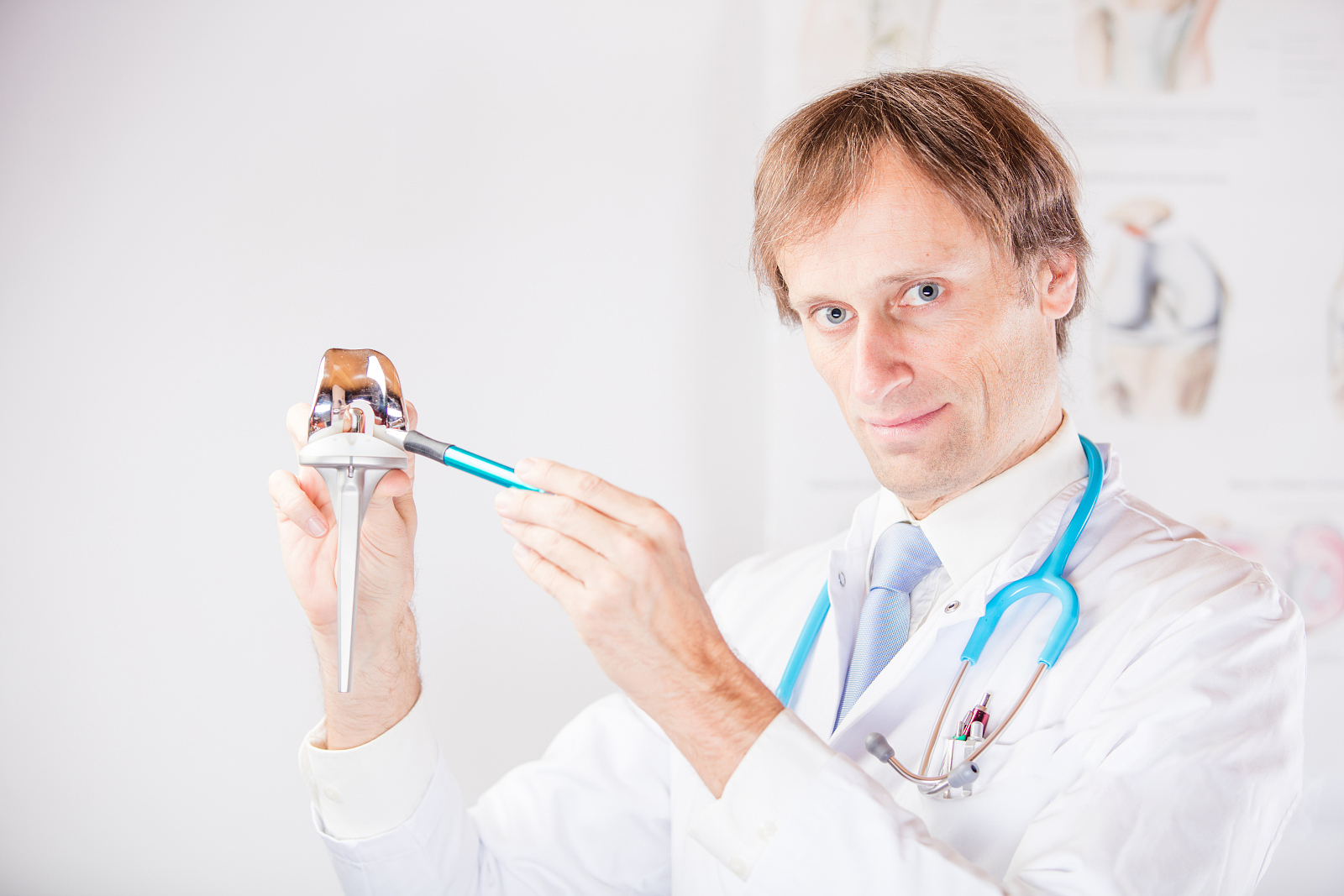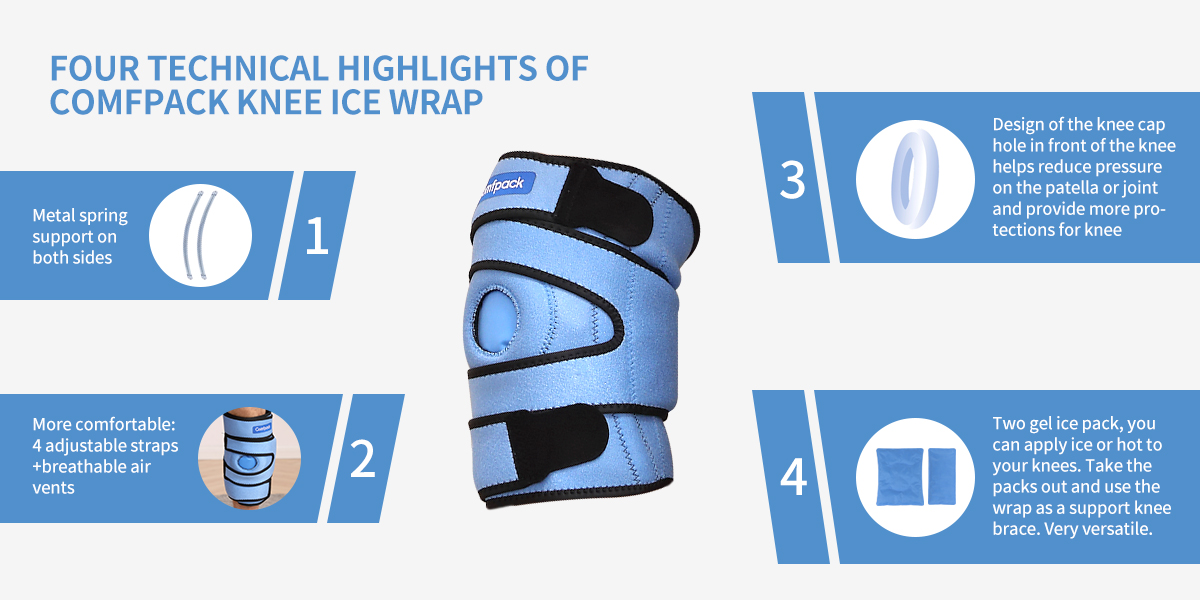By Comfpack | 06 August 2021 | 0 Comments
7 Things You Need to Do After Knee Replacement Surgery
After total knee replacement surgery you can expect gradual improvement over the coming months. You should gradually expect less pain, stiffness and swelling, and a more independent lifestyle. Returning to work depends on how quickly you heal and how demanding your job may be on a new joint.

Here are a few things you can expect after knee replacement surgery:
Follow Up: The stitches or surgical staples will be removed during a follow-up office visit. Inform your doctor to report any of the following: fever, redness, bleeding, drainage from the incision site, increased pain around the incision site.
Preparing your home: It is important that you avoid falls at home after your knee replacement surgery, because a fall can result in damage to the new joint. So, making certain modifications to your home may help you during your recovery. These modifications include:
-Proper handrails along all stairs
-Safety handrails in the shower or bath
-Shower bench or chair
-Raised toilet seat
-Long-handled sponge and shower hose
-Dressing stick
-Sock aid
-Long-handled shoe horn
-Reaching stick to grab objects
-Removing loose carpets and electrical cords that may cause you to trip
-Not driving until your doctor tells you to
-Avoiding stair-climbing until recommended by your doctor
Your doctor may give you additional or alternate instructions after the procedure, depending on your particular situation.
Icing: After a knee replacement, swelling and inflammation are expected. Swelling can cause increased pain and limit your range of motion, so taking steps to reduce the swelling is important. Apply knee ice packs or some form of cold therapy to help reduce swelling. Successful pain management paves the way for better recovery.

Elevation: For knee replacement, swelling of the knee or leg is common. If this occurs, elevate the leg above the level of your heart (place pillows under the calf, not behind the knee joint), and apply ice directly to the knee. You may continue with elevation and icing as needed to help decrease swelling and discomfort.
Medications: Not only does medication help with pain management, but it is also vital to reduce inflammation. Sometimes antibiotics are needed for preventing infection. Be sure to take only recommended medications.
Social Support: It’s also a good idea to have family and friends lending a hand throughout your recovery process. Having a family member or friend living with you can give you a lot of help in your post-operative life, such as life chores, cooking, and more importantly, spiritual companionship, giving you more support and spiritual comfort. It’s always helpful for family members or a social system to be supporting a patient.
Physical Therapy: Experts agree that physical therapy is essential to recovery after partial or total knee replacement. Ask your doctor if these exercises are appropriate and when you can start doing them and for how long.
-Walking
Walking is the ideal way to build up the strength in your knee. When you begin to walk, use smaller steps and go for a short distance so you don’t tire your knee. You will be able to gradually increase the distance without causing any discomfort.
-Swimming
Swimming is the perfect activity as it is not load-bearing and so will not cause your knee any discomfort. Just swim for a modest distance at first; this can be steadily increased.
-Cycling
Inside or outdoors, you will find cycling is an effective way to strengthen your knee as it is not a load-bearing activity. You may want to begin with an exercise bike first before you take to the outdoors. When you’re ready to cycle outside, ensure it’s on flat ground, avoiding any jolts. You can slowly increase the length of time and distance.
How soon can I get back to normal after knee replacement surgery?
You should be able to get up and walk fairly soon after your surgery. Take your time and don’t try to walk too quickly. It is important to listen to your body and if it is telling you to rest, then rest.
After six weeks, you should be able to resume normal leisure activities. However, it may take up to three months for the pain and swelling to settle.
Full recovery from surgery may take several months or up to two years, depending on the individual. During this time, your muscles will get stronger from regular exercise and your scar tissue will heal.
Once on the road to recovery, you can look forward to and enjoy your new-found mobility, but if you have any concerns about your recovery, contact your healthcare team for assistance.

Here are a few things you can expect after knee replacement surgery:
Follow Up: The stitches or surgical staples will be removed during a follow-up office visit. Inform your doctor to report any of the following: fever, redness, bleeding, drainage from the incision site, increased pain around the incision site.
Preparing your home: It is important that you avoid falls at home after your knee replacement surgery, because a fall can result in damage to the new joint. So, making certain modifications to your home may help you during your recovery. These modifications include:
-Proper handrails along all stairs
-Safety handrails in the shower or bath
-Shower bench or chair
-Raised toilet seat
-Long-handled sponge and shower hose
-Dressing stick
-Sock aid
-Long-handled shoe horn
-Reaching stick to grab objects
-Removing loose carpets and electrical cords that may cause you to trip
-Not driving until your doctor tells you to
-Avoiding stair-climbing until recommended by your doctor
Your doctor may give you additional or alternate instructions after the procedure, depending on your particular situation.
Icing: After a knee replacement, swelling and inflammation are expected. Swelling can cause increased pain and limit your range of motion, so taking steps to reduce the swelling is important. Apply knee ice packs or some form of cold therapy to help reduce swelling. Successful pain management paves the way for better recovery.

Elevation: For knee replacement, swelling of the knee or leg is common. If this occurs, elevate the leg above the level of your heart (place pillows under the calf, not behind the knee joint), and apply ice directly to the knee. You may continue with elevation and icing as needed to help decrease swelling and discomfort.
Medications: Not only does medication help with pain management, but it is also vital to reduce inflammation. Sometimes antibiotics are needed for preventing infection. Be sure to take only recommended medications.
Social Support: It’s also a good idea to have family and friends lending a hand throughout your recovery process. Having a family member or friend living with you can give you a lot of help in your post-operative life, such as life chores, cooking, and more importantly, spiritual companionship, giving you more support and spiritual comfort. It’s always helpful for family members or a social system to be supporting a patient.
Physical Therapy: Experts agree that physical therapy is essential to recovery after partial or total knee replacement. Ask your doctor if these exercises are appropriate and when you can start doing them and for how long.
-Walking
Walking is the ideal way to build up the strength in your knee. When you begin to walk, use smaller steps and go for a short distance so you don’t tire your knee. You will be able to gradually increase the distance without causing any discomfort.
-Swimming
Swimming is the perfect activity as it is not load-bearing and so will not cause your knee any discomfort. Just swim for a modest distance at first; this can be steadily increased.
-Cycling
Inside or outdoors, you will find cycling is an effective way to strengthen your knee as it is not a load-bearing activity. You may want to begin with an exercise bike first before you take to the outdoors. When you’re ready to cycle outside, ensure it’s on flat ground, avoiding any jolts. You can slowly increase the length of time and distance.
How soon can I get back to normal after knee replacement surgery?
You should be able to get up and walk fairly soon after your surgery. Take your time and don’t try to walk too quickly. It is important to listen to your body and if it is telling you to rest, then rest.
After six weeks, you should be able to resume normal leisure activities. However, it may take up to three months for the pain and swelling to settle.
Full recovery from surgery may take several months or up to two years, depending on the individual. During this time, your muscles will get stronger from regular exercise and your scar tissue will heal.
Once on the road to recovery, you can look forward to and enjoy your new-found mobility, but if you have any concerns about your recovery, contact your healthcare team for assistance.
Leave a Reply
Your email address will not be published.Required fields are marked. *
POPULAR BLOG
CATEGORIES